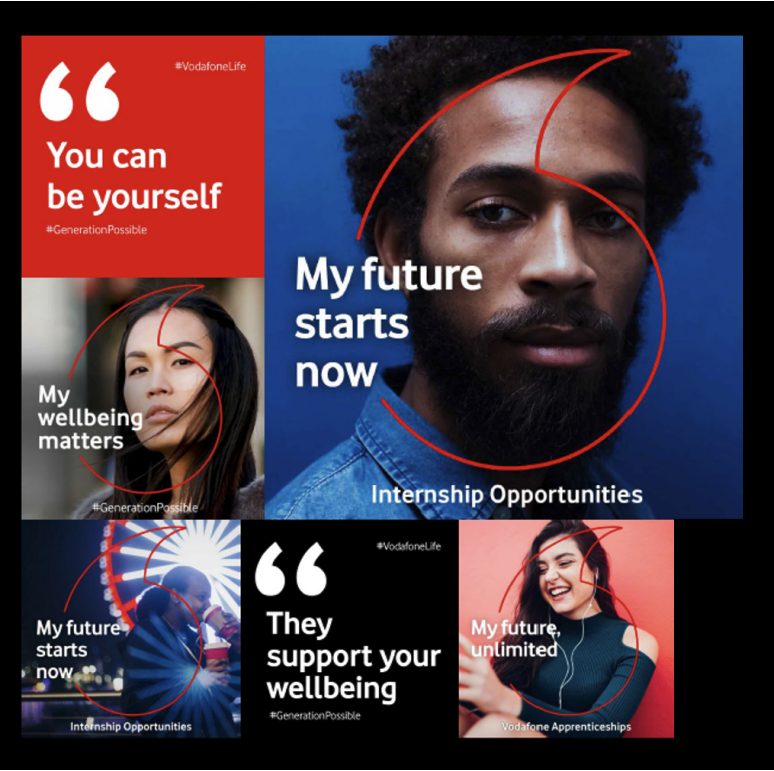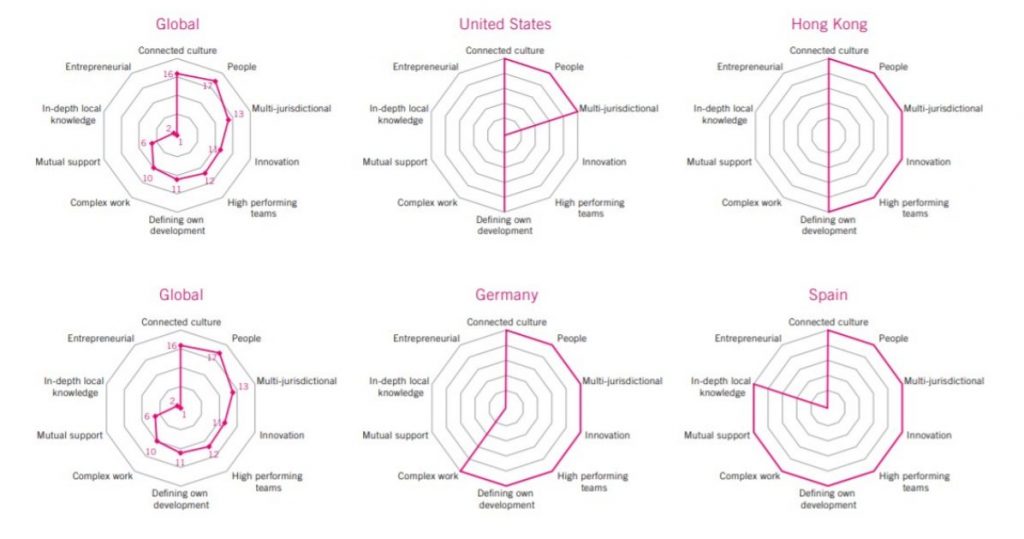When the COVID-19 pandemic struck, organisations everywhere were forced to fundamentally rethink their talent acquisition strategies. Whether that came in the form of hiring freezes, a dramatically reduced number of new hires, laid off workers or furloughed employees, an internal mobility program can be a cost-effective way to help organisations bounce back in the upcoming recovery phase.
What’s more, many people will be less inclined to switch jobs in the coming months and might opt to stay with their current employer where they feel their job is secure. It will be increasingly difficult to pull top talent away from their current employers—especially if those employers kept employees on and supported them during a challenging time.
That said, starting your talent search from within can help you fill gaps quickly and effectively, while also boosting retention rates and saving scarce resources. In this article, we’ll take a deeper look at what an internal mobility program is, the benefits of internal mobility and tips for building an effective internal mobility program in your organisation.
What is an Internal Mobility Program?
Internal mobility refers to the movement—both vertically and laterally—of employees within an organisation. An internal mobility program takes this idea a step further by implementing a specific process for moving internal talent between roles. And since the onset of the pandemic, while many organisations have been unable to hire external talent at pre-pandemic rates, internal mobility has become a necessity for filling critical skills gaps left in organisations.
Benefits of an Internal Mobility Program
Save Time and Money
One of the biggest benefits of an internal recruitment strategy is the ability to operate more efficiently—especially during a time where many organisations are operating with leaner teams after scaling down in response to challenges presented by COVID-19.
Many organisations today are faced with high applicant volumes and a time-consuming selection process for their talent acquisition teams. Moreover, the time and money spent on recruiting externally, like posting job ads, running recruitment marketing campaigns, sourcing and communicating with candidates can take a toll on already limited resources.
In addition to savings on recruitment costs, external candidates often have higher salary expectations than internal employees—especially if they are hesitant about leaving their current employer. On average, the starting salary of an external hire is 18-20% more than that of internal candidates.
Leverage Furloughed Employees
When organisations enter the recovery phase and begin to ramp up hiring, an internal recruitment process can allow you to easily search within your furloughed employees first—targeting the people who know your business and are ready to get back to work.
By pulling from your pool of furloughed employees, you’ll have a wealth of internal candidates who already possess organisational knowledge and expertise, leading to faster rates of productivity and less time spent on initial trainings. You’ll also have access to this talent almost immediately, allowing you to bounce back quickly and reduce time spent searching for external candidates who fit your needs.
Retain Top Talent
By developing internal talent and providing opportunities for mobility within your organisation, employee engagement and morale will increase, leading to higher retention rates and reduced employee turnover that often comes with hiring externally.
According to data from LinkedIn, companies that excel at internal mobility can retain employees nearly twice as long as companies that struggle with it. In addition, employee willingness to go above and beyond at work is 27% higher and employee intent to stay is 33% higher at organisations with a more vibrant internal labour market, according to a report by Gartner.
Foster Diversity and Inclusion
An internal mobility program can be a great way to proactively develop the diverse talent already existing within your organisation. By giving internal employees the opportunity to move up, reskill and take pathways for growth within your organisation, you’ll be fostering a more diverse workforce at all levels, including leadership.
Plus, according to McKinsey’s Delivering Through Diversity report, companies in the top-quartile for gender diversity on executive teams were 21% more likely to outperform on profitability and companies in the top-quartile for ethnic/cultural diversity on executive teams were 33% more likely to have industry-leading profitability.
Utilising internal talent and providing opportunities for growth will improve diversity and inclusion at your organisation overall and will consequently aid in your succession planning process as well.
How to Create an Effective Internal Mobility Program
Build an Internal Mobility Platform
Organisations should invest in a dedicated internal mobility platform that matches employees with open opportunities within the business. Recruiters can make job postings within the platform, so internal employees can see open opportunities and apply directly in the system.
Employees can also create a profile within the platform outlining their demographics, skills, capabilities, experience and more which enables recruiters to more effectively find and place internal employees in new roles.
Internal Mobility Platform in Practice
As a result of COVID-19, this government agency in Australia was operating with a lean workforce and limited resources. They required a solution that allowed them to leverage the skills and competencies of their existing workforce so they could save the time, cost and resources it takes to access the external candidate market. They partnered with PeopleScout to develop and launch a platform which facilitates internal mobility for workers who are potentially impacted by the economic downturn due to COVID-19 or looking to move within their department or other government agencies. This allowed the client to engage their workforce through enhanced workforce mobility, skills development and career opportunities within the department and across government.
Solution Highlights
PeopleScout created an internal mobility platform using our proprietary talent technology, AffinixTM, to give the client insight into the scope and experience of their internal talent.
- Employees are able to self-manage profiles showcasing employee demographics, education and work history, and specific skills and competencies
- Employees who may have been affected by COVID-19 are given priority access and visibility to all job opportunities across the agency before they are advertised externally
- Employees can self-rate on key competencies like tech and digital skills
- AI technology matches candidates to open opportunities across government and provides alerts to candidates on open job opportunities
- Increased engagement of existing staff, while reducing the use of expensive contingent labour hire resources
- Recruiters have a strong sense of what other positions may be a good fit for internal employees, based on hard and soft skills
Communicate Transparently
When officially launching your internal mobility program, it’s important to openly communicate the strategy with employees. Inform employees of the new program and provide clear communications on how the process will work. If you have a specific platform for internal mobility, this can include communicating how to access the platform, create a profile, view job openings and what to expect after applying for a role.
Failure to explain your internal recruitment strategy clearly can result in employee confusion and a negative sentiment in the future if they misunderstand why they weren’t selected for a specific role or promotion.
Focus on People at All Levels
A common mistake organisations make when implementing an internal mobility process is focusing only on the highest performing employees within the business. While these high performers are likely good candidates for lateral and vertical moves within the organisation, they aren’t the only people who you should open the program to.
Instead, you should focus on people at all levels who are high potentials. These are the employees who you can see having great potential in various roles, and eventually in management and leadership roles. By broadening your internal search to include employees at all levels, you’ll also be increasing the mobility of your diverse talent.
Educate Management
Many managers might fear losing an exceptional employee from their department to another area within the business, so it’s important to educate management on the benefits of internal mobility for the organisation as a whole.
When managers understand the reasons for internal mobility, they will be more likely to encourage their employees to participate in the program and have discussions on what their employees’ goals are for growth within the organisation. This will foster a culture of support and employees will feel comfortable talking with their manager about opportunities for mobility.
Encourage Endorsements and Referrals
A key component of a successful internal mobility program is an endorsement and referral system. Managers should be able to rate employees based on the skills and competencies they’ve included on their profile. This can include comments on performance and examples of times employees demonstrated excellent work.
In addition, managers who see an opening and know someone who might be a great fit, can refer that employee to the recruiter and provide their endorsement. This gives recruiters additional insight into which employees may be the best fit for open roles based on feedback from leaders who have worked directly with the internal candidate.
Utilise Technology to Support Internal Mobility
Technology can enhance your internal mobility program and save your talent acquisition team time in a variety of ways through the use of artificial intelligence, automation and more. A few examples of how PeopleScout’s Affinix supports internal mobility include:
- Requisition flexibility for posting internally, externally or both
- Simplified separation between internal and external candidates for an open role
- Sourcing that automatically matches candidates to open roles based on their unique skills, competencies and experiences
- Automated, targeted internal mobility campaigns
- AI-enabled job recommendations personalized to internal employees
- Proactive system recommendation of candidates who may be a good fit for open roles based on their profile
THE SKILLS CRISIS COUNTDOWN: THE CLOCK IS TICKING ON TACKLING SKILLS GAPS
An Innovative Strategy for the Future of Work
As the economic effects of the COVID-19 pandemic begin to subside and organisations resume hiring, they will be looking to new and innovative ways to recruit and structure their talent acquisition programs for the new world of work. Prioritising diversity and inclusion and flexible work opportunities will remain top of mind as organisations look to the future, but simply attracting talent won’t be enough. Organisations will need to employ a multifaceted approach to talent acquisition and retention to keep top talent with key skills. Adding an internal mobility strategy to the total talent mix will be a necessary focus for organisations looking to build a lasting and resilient workforce for years to come.






















